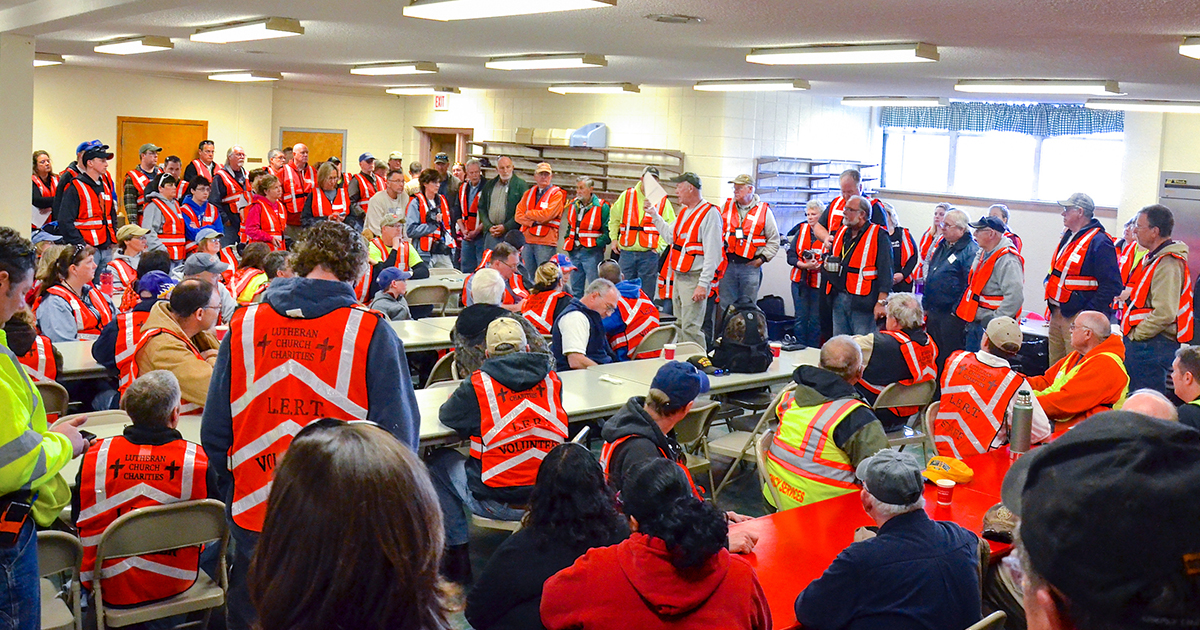
Lutheran Early Response Team (LERT) is a network of Lutheran Church—Missouri Synod (LCMS) volunteers who are organized at the district level and trained to deploy rapidly in the event of a disaster, offering material and spiritual support to those who have been affected.
Now, in addition to flood buckets, chainsaws and words of Gospel comfort, LERT has another resource in its “toolkit”: a new website at lcms-lert.org that will better facilitate the work of LCMS Disaster Response at both the local and national level.
According to the Rev. Robert Wurst, volunteer manager for LERT, the website “will help us see what LERT training and deployments are taking place across the Synod. Additionally, our LERT volunteers — and anyone else who is interested — can see what training and deployment opportunities are available and make plans to jump in and help as they are able. The software lets us communicate detailed needs and will help our LERT volunteers be well-prepared when they respond to a disaster.”
In addition to information about training and deployment opportunities, the website includes links to disaster response resources and the LERT blog.
Work on the website began in November 2020 with the contracting of a host, followed by several months of testing. The site went live with the LCMS Florida-Georgia District in February 2021, and as of May, all 35 LCMS districts are active. The software has been shared, at no cost, with all of the Synod’s disaster response entities, including Recognized Service Organizations (RSOs). “We want it to be easy for all to use,” Wurst said.
“We are working with our DDRCs [District Disaster Response Coordinators] to get them trained and comfortable using the software,” Wurst continued. “It’s a new tool for everyone. The DDRCs often have multiple duties [beyond their disaster-related ones], and we’re hoping that this will make their disaster response duties easier to coordinate and track.”
Wurst noted that it can be difficult to get the word out about disasters. “In the past, notices were often spread by word of mouth. We didn’t have a central place where our DDRCs could communicate with their volunteers and with other DDRCs and RSOs across the Synod.
“The new software will allow us to readily connect with all our DDRCs, trainers and volunteers. It will also allow the DDRCs to schedule deployment responses from single-day to multi-week events and to create shifts for volunteers to sign up for many different support tasks, such as chainsaw work, food preparation, mucking out and more. We haven’t had such capability or flexibility in the past.”
Wurst stressed that anyone who has served as a LERT volunteer in the past, as well as anyone who would like to begin serving, should sign up on the new platform. “We want all our LERT volunteers to log in to the system and update their information so that they are able to receive information about LERT events from their DDRC,” he explained.
This year’s storm season has so far been relatively quiet, but that can change at any time. As part of its ongoing training and preparation, LCMS Disaster Response is providing a weekly open Zoom hour for DDRCs and LERT trainers to ask questions about the new software and other disaster response topics.
“We are striving to have good communication with our brothers and sisters and are trying to give them tools and guidelines so that our work together goes smoothly, with increased capacity for service to our churches and their communities,” Wurst said. “We continually emphasize that our LERT volunteers can serve their neighbor during both ordinary — and extraordinary —times.”
Visit the new LERT website at lcms-lert.org.
Learn more about LCMS Disaster Response at lcms.org/disaster.
Posted July 19, 2021